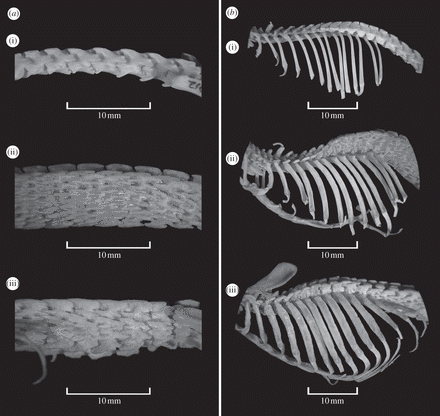New Species Of Hero Shrew Discovered, Scutisorex Thori Has ‘Most Bizarre’ Spine [PHOTO]

A new species of the hero shrew has been identified by scientists. The mole-like mammal with a nearly indestructible back has eluded evolutionary biologists who can’t find adaptive function for such a strong spine.
Like other species of the hero shrew, the newly named Scutisorex thori, has interlocking vertebrae making it four to five times more robust than other animals with a comparable body mass. With this discovery, scientists hope it will help them understand how the animal evolved and why it has an unusually strong backbone.
"The hero shrew has the most bizarre mammalian backbone in the world," William Stanley, lead author of the July 24 Biology Letters study told LiveScience.
First discovered in 1910 by explorers in the Democratic Republic of Congo, the hero shrew’s most distinctive feature was a surprise back then. "The explorers watched in amazement as a full-grown man stood on the back of the Hero Shrew, and the animal walked away, unharmed," Stanley said.
A specimen of the animal was dissected seven years later which revealed the hero shrew’s unusual backbone structure. Unlike other mammals, the hero shrew has at least 10 lower vertebrae jut out and interlock with one another. Humans, in comparison, have only five lumbar vertebrae, Stanley said.
Until recently, the hero shrew was classified as one species. It was only when specimens were collected in the lowland forest near the Tshuapa River in the Democratic Republic of Congo did they identify a new species that they believe as a “possible intermediate” between the original hero shrew and other shrews.
The Scutisorex thori has eight vertebrae and fewer lateral processes, unlike the original species which has 10. Scientists posit that the spine of the new species is used so they can position themselves between the trunk and lead bases of palm trees and use extreme force to get concentrated sources of beetle larval. They can also lift logs or rocks to get more food that usually remains hidden from other mammals.
"I describe the possibility that they use their body as a lever to push up these leaf bases, bending and prying them apart so they can access all the invertebrates and grubs there," study co-author Lynn Robbins told LiveScience. "There's a large muscle attachment that goes on their head and across the spine that could explain how they can get into these tight situations and not be crushed by the pressure as they exit the feeding area."
Although there is still more to learn from the new hero shrew, Stanley told the BBC that the discovery may be the “missing link” on how the Scutisorex thori relates to other shrews.
"The age of discovery is not over. People think we have everything sussed out but the collections contained within institutions [such as the Field Museum of Natural History] allow us to figure out what makes this planet tick,” Stanley said. "This is just one example of a new mammal but there's still a lot more to this planet we have to learn about."
© Copyright IBTimes 2024. All rights reserved.





















